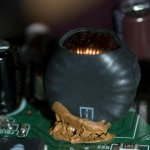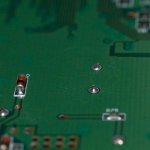sheepdog
Available darkness.
Hi!
I have had the worst of luck with my Scan Dual IV this autumn, managing to break it again just after I fixed it.
I postponed fastening the plastic cover because my ADD tendencies make me unable to finish any project properly before starting a new one, and after scanning the roll that I'd waited two weeks to see, I decided to move to the livingroom to continue the work. Did I even consider not lifting by the cover? Nope.
It flew much like a giraffe would, and contracted exactly two symptoms.
- the light does not come on when I push the power switch with the power chord connected.
- a coil located near the power input on the pcb is hanging by the gummy insulation film.
Would I be able to fix this? Would it be easier to do so by attaching wires from the contact points on the coil to those on the pcb? Any suggestions on reassuring information on how to proceed?
I have had the worst of luck with my Scan Dual IV this autumn, managing to break it again just after I fixed it.
I postponed fastening the plastic cover because my ADD tendencies make me unable to finish any project properly before starting a new one, and after scanning the roll that I'd waited two weeks to see, I decided to move to the livingroom to continue the work. Did I even consider not lifting by the cover? Nope.
It flew much like a giraffe would, and contracted exactly two symptoms.
- the light does not come on when I push the power switch with the power chord connected.
- a coil located near the power input on the pcb is hanging by the gummy insulation film.
Would I be able to fix this? Would it be easier to do so by attaching wires from the contact points on the coil to those on the pcb? Any suggestions on reassuring information on how to proceed?
Last edited:



